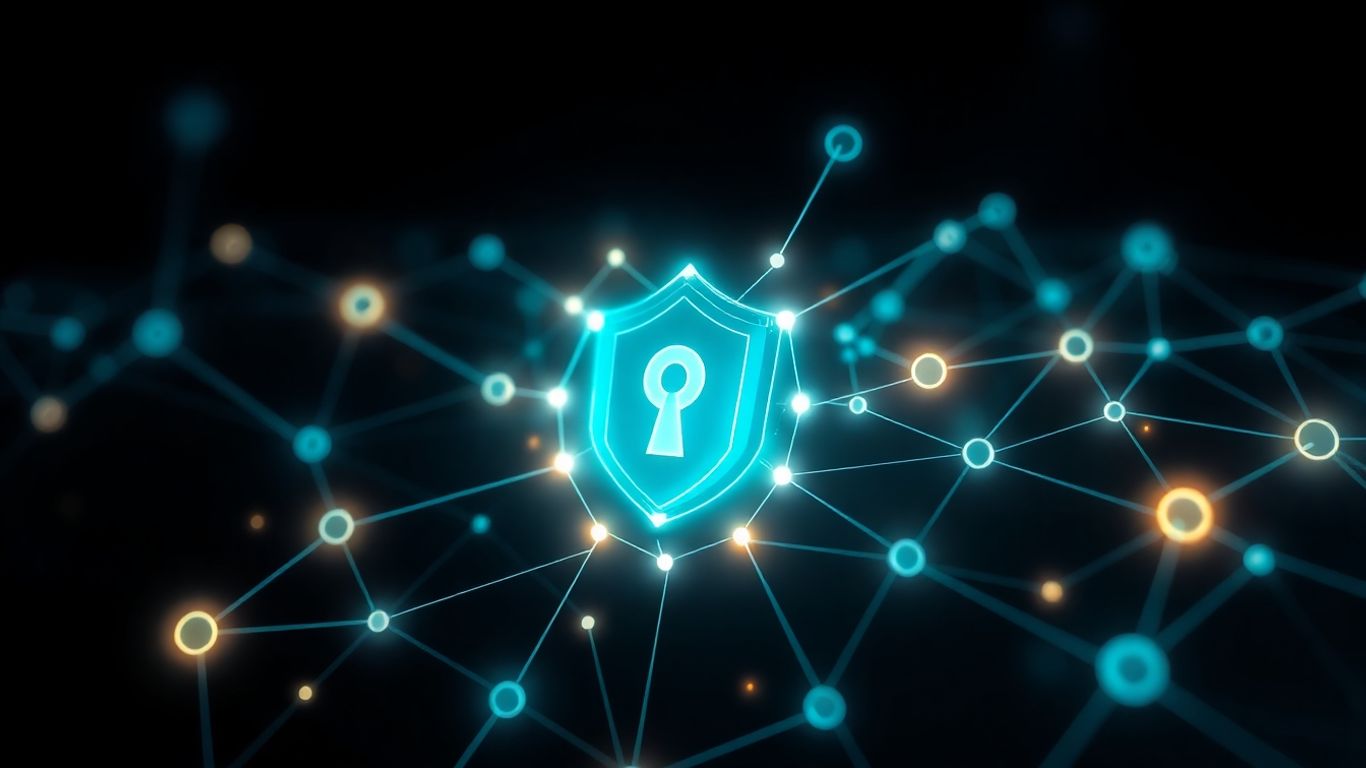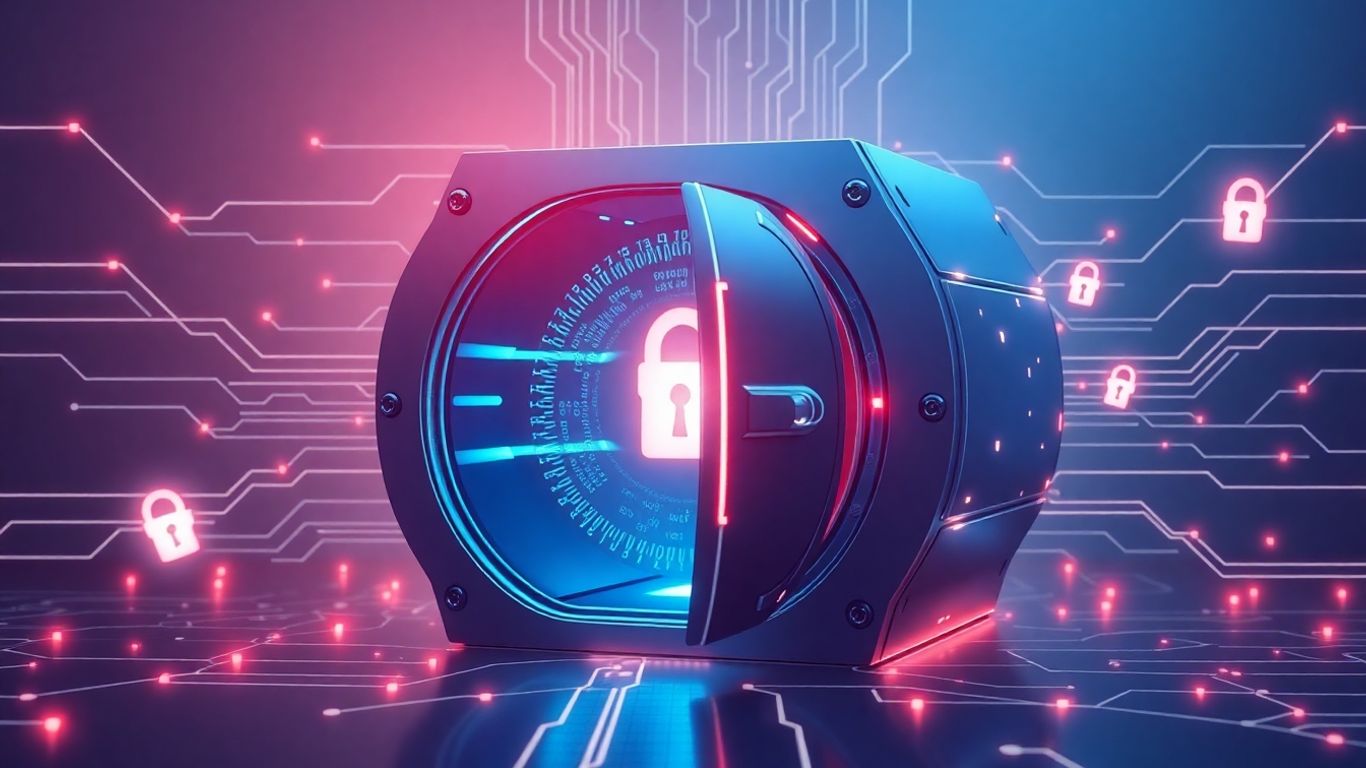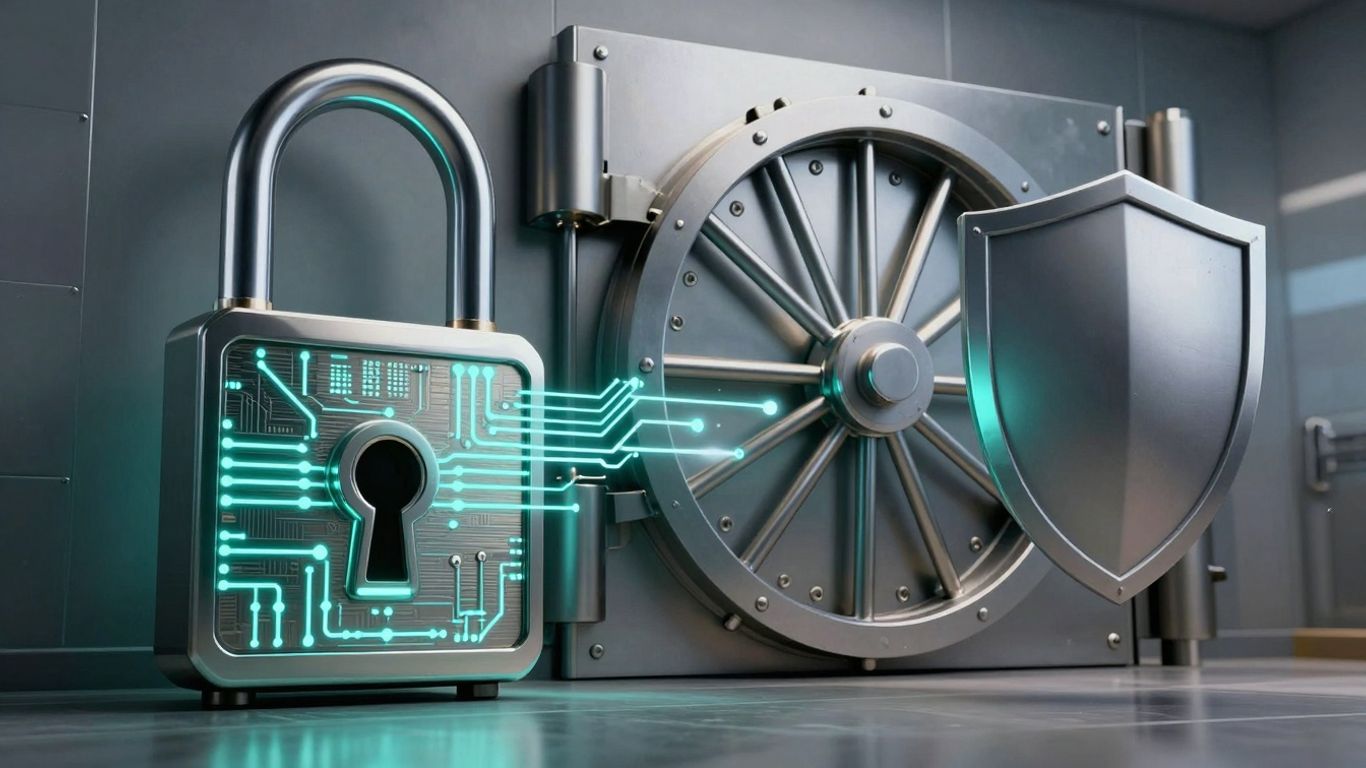[ newsletter ]
Stay ahead of Web3 threats—subscribe to our newsletter for the latest in blockchain security insights and updates.
Thank you! Your submission has been received!
Oops! Something went wrong. Please try again.
Explore MPC wallets, the future of secure digital asset management. Learn how they enhance security, offer key features, and compare to traditional solutions.





Keeping your digital money safe is a big deal, right? We hear about hacks and scams all the time, and it makes you wonder how to actually protect your crypto. For a while now, people have been talking about different kinds of wallets, and one that's getting a lot of attention is called an MPC wallet. It sounds complicated, but it's basically a smarter way to handle your digital assets. Think of it as a high-tech security system for your coins. MPC wallets are changing the game for secure digital asset management.
When we talk about keeping digital money safe, it's always the main concern, right? Traditional wallets, like the ones you might use for everyday cash, have their own security measures, but in the digital world, things get a bit more complicated. That's where Multi-Party Computation, or MPC, wallets come into play. They're shaking things up by offering a different approach to keeping your digital stuff safe. At its heart, an MPC wallet is all about sharing the responsibility for a private key. Instead of one single, super-secret key that controls everything, MPC breaks that key into pieces, called shards. These shards are distributed among different parties or devices. Think of it like a group of friends needing to agree on something before a decision is made – no single person holds all the power.
MPC wallets represent a significant innovation in digital asset management, leveraging the strengths of secure multi-party computation to provide a secure and private environment for cryptocurrency transactions and storage. A defining feature of MPC wallets is their unique approach to key management. Instead of starting with a traditional single private key, MPC wallets generate multiple key shards. These shards collectively participate in the computation necessary to achieve the effect of a single private key. They are used in unison to sign transactions but are never consolidated into a single key. This method effectively mitigates the single-point-of-failure risks associated with single private keys. By decentralizing the transaction signing process across multiple parties, MPC wallets significantly enhance security and maintain the integrity of every transaction.
Cryptography is the engine that makes MPC wallets tick. It's not just about hiding information; it's about complex mathematical processes that allow multiple parties to compute a function over their private inputs without revealing those inputs to each other. In the context of MPC wallets, this means that different parts of a private key (the shards) can be held by different entities – say, your phone, a secure server, and a trusted third party. When a transaction needs signing, these entities communicate using cryptographic protocols. They perform calculations together to generate a valid signature for the transaction, but crucially, no single entity ever sees the complete private key. This distributed computation, secured by advanced cryptographic techniques, is what makes MPC wallets so robust against attacks that would target a single point of failure.
The core idea is to distribute the risk. Instead of one big secret that could be stolen, you have many smaller, protected pieces that work together. This makes it much harder for anyone to get away with your assets.
Here's a simplified look at how the key shards are managed:

So, how does this whole MPC wallet thing actually make things more secure? It's a pretty big deal, honestly. With older types of wallets, if someone managed to get hold of your private key, or even your seed phrase which is basically the same thing, they had complete access to your digital money. Think of it like losing the one master key to your entire vault – everything is gone. MPC wallets completely sidestep this problem.
The main security boost comes from how MPC wallets handle private keys. Instead of having one single, super-secret key that controls everything, MPC breaks that key into several pieces, often called "shards." These shards are then spread out among different trusted parties or devices. The key itself is never fully put back together. A transaction can only be signed when a specific number of these shards, a pre-set "threshold," are brought together. This setup makes it incredibly hard for hackers to steal your funds. Even if they manage to compromise one part of the system, they don't get the whole picture.
This distributed approach means no single person or device holds the complete private key. It's a bit like a group project where everyone has a piece of the puzzle, and no one person can complete it alone. This decentralization is the core security advantage. The magic is that these shards are never consolidated into a single, vulnerable key. This dramatically reduces the "attack surface" – the number of places a hacker could try to break in. It’s a much safer way to manage digital assets, especially for businesses that need to spread responsibility.
At its heart, MPC uses clever math, specifically a type of cryptography called threshold cryptography. This allows multiple parties to collectively perform an action, like signing a transaction, without ever revealing their individual inputs (the key shards). The system is designed so that even if some parties are compromised, the overall security remains intact as long as the threshold of required shares is met. This cryptographic model provides resilience against both external cyber threats and internal security breaches, making it a robust solution for protecting valuable digital assets.
The private key is never fully assembled or stored in one place, meaning it's never exposed to a single device or party. This distributed nature is the fundamental security advantage of MPC wallets, making them a significant step forward in digital asset protection.
MPC wallets are really shaking things up when it comes to managing digital money. They manage to be super secure without being a total pain to use, which is something a lot of older wallet types struggle with. It’s like they found a way to have their cake and eat it too.
This is a big one. Think about traditional wallets, whether they're on your phone or a fancy hardware device. They usually keep the whole private key in one spot. If someone gets into that one spot, they have everything. MPC wallets do things differently. They split up the private key into pieces, called shares. These shares are spread out, maybe on different devices or even with different trusted services. You need a certain number of these shares, like 2 out of 3, to sign off on a transaction. This means even if one piece gets snagged, your funds are still safe because the whole key is never put together.
For businesses or groups, just being secure isn't enough. You need rules and ways to track who's doing what. MPC wallets are great for this. They let you set up rules so that multiple people have to agree before a transaction can happen. For example, maybe the finance person and the compliance officer both need to approve any big money movement. You can even set up rules like only allowing certain transactions at specific times or for specific purposes. These rules are built into the system using cryptography, not just written down somewhere, which makes them much more reliable and harder to mess with. It’s a much smarter way to handle money than just hoping everyone follows the rules.
Losing access to your crypto is a nightmare scenario. With MPC wallets, recovery is designed to be more robust. Because the key is split into shares, losing one share doesn't mean you lose everything. You can often recover your assets as long as you still have enough of the other shares. This is way better than losing a single seed phrase for a traditional wallet, which can be a one-way ticket to losing your funds forever. The process can be set up to be secure and manageable, fitting different needs.
One of the cool things about MPC wallets is that they aren't usually tied to just one blockchain. They can work with a bunch of different ones, like Bitcoin, Ethereum, and many others. This means you don't need a separate wallet for every single crypto you own. You can manage assets across different networks from one place, which is super convenient. They're built to be adaptable, so as new blockchains pop up, MPC wallets can often support them too. This makes them a really flexible choice for the long run.
MPC wallets offer a modern approach to digital asset security by distributing cryptographic secrets. This design inherently reduces risks associated with single points of failure and allows for sophisticated, multi-party control mechanisms that are cryptographically enforced. The flexibility in recovery and broad blockchain compatibility further solidify their position as a leading solution for managing digital assets securely and efficiently.
Here's a quick look at how they stack up:
When we talk about managing digital assets, especially cryptocurrencies, there are a few main ways people have done it. For a long time, it was mostly about using what we call 'traditional' wallets. Think of your standard software wallet on your phone or computer, or even those fancy hardware wallets that look like USB drives. These have been the go-to for years, but they come with their own set of challenges, particularly when it comes to security and how easy they are to manage, especially for larger amounts or for businesses.
Traditional wallets usually rely on a single private key. This key is like the master password to your digital vault. If someone gets their hands on that one key, they have full access to everything. It's a single point of failure, and honestly, it's a bit nerve-wracking. MPC wallets, on the other hand, break that private key into several pieces, called 'shards'. These shards are spread out, and you need a specific number of them to come together to authorize a transaction. This means even if one piece gets stolen, your assets are still safe. It's like having multiple locks on your door, and each lock needs a different key, and you need at least two of those keys to open it.
Here's a quick look at how they stack up:
Privacy is another big area where these two approaches differ. With traditional wallets, especially if you're not careful about how you use them, your transaction history can become quite public. If someone links your wallet address to your identity, they can see everything you've done. MPC wallets offer a more private experience. Because the signing process happens in a distributed way, and the full key is never assembled, it's harder for external parties to track or link transactions back to a specific individual or entity. It adds a layer of obfuscation that many users, especially those dealing with sensitive financial activities, find very appealing.
The way private keys are handled is the core difference. Traditional methods keep the whole key in one place, creating a tempting target. MPC scatters the responsibility, making it much harder for anyone to get everything they need to steal your funds. It's a shift from 'guarding one treasure chest' to 'managing several scattered pieces of a map'.
Now, let's talk about using them. Traditional wallets, especially the simpler software ones, are generally pretty straightforward. You download an app, create a wallet, and you're off. Hardware wallets have a bit more of a setup, but they're still designed for individual users. MPC wallets, because they involve multiple parties or systems and a more complex cryptographic process behind the scenes, can sometimes feel a bit more involved initially. There's a learning curve, especially if you're not familiar with concepts like distributed systems or threshold cryptography. However, the user experience is improving rapidly, and many MPC solutions are now designed to be quite user-friendly, abstracting away much of the complexity. For institutions, the added control and security often outweigh the initial setup effort.

MPC wallets aren't just a cool idea; they're actively being used by big players right now. Think about it – institutions need top-notch security, but they also need to actually get things done without a ton of hassle. MPC wallets are hitting that sweet spot.
This is where MPC really shines for organizations. Instead of one person holding all the keys, literally, MPC splits them up. This means no single employee, not even the CEO, can move funds without others signing off. It’s like a digital safety committee for your crypto.
Every organization is different, and MPC wallets can be set up to match. You can create specific rules for how assets are managed.
The ability to distribute control and enforce granular policies makes MPC wallets a natural fit for businesses that need to manage digital assets with the same level of rigor they apply to traditional finance. It brings a new level of accountability and transparency to crypto operations.
MPC wallets integrate smoothly into existing business processes. They can connect with company identity systems, making it easy to add or remove users as staff changes. This means less manual work and fewer chances for errors. Plus, the audit trails generated by MPC transactions are usually very detailed, which is a lifesaver when regulators come knocking. It’s about making crypto management as robust and manageable as any other part of the business.
The world of digital assets isn't standing still, and neither are MPC wallets. As blockchain technology keeps growing and finding new uses, MPC wallets are expected to become even more common. Think of them as the next step in keeping digital money and other assets safe as the whole system gets more complex. They're really good at solving tricky security problems that pop up as new blockchains and applications are built.
MPC wallets are going to change how we all handle our digital stuff. Because they're more secure and also pretty easy to use, more people, from regular folks to big companies, will probably start using them. As more digital assets appear, the need for wallets that are both safe and simple will just keep going up. This shift means we're moving towards a future where managing digital wealth is more accessible and less risky for everyone.
When more people and businesses use MPC wallets, it could really boost the whole crypto economy. Having a safer and more reliable way to manage digital money might make more people trust and get involved with crypto. This could lead to cryptocurrencies and other blockchain-based things becoming a much bigger part of our financial lives. It's all about building more confidence in the system.
One of the big future challenges is quantum computing. These super-powerful computers could potentially break the encryption that protects current digital assets. MPC technology is already being looked at as a way to build defenses against these future threats. By using advanced cryptographic methods, MPC wallets could offer a strong shield against quantum attacks, making digital assets safer for the long haul.
Here's a quick look at how MPC wallets are evolving:
The ongoing development in MPC technology is paving the way for a more secure and user-friendly digital asset landscape. As the technology matures, it promises to address emerging security challenges and broaden the adoption of blockchain-based solutions across various sectors.
So, we've looked at how MPC wallets work and why they're becoming such a big deal for keeping digital money safe. It's pretty clear that the old ways of storing crypto have some real weak spots, especially when you're dealing with larger amounts or working in a team. MPC wallets fix a lot of those problems by splitting up the private key, so there's no single place for hackers to attack. This means better security and more control for everyone involved, from individuals to big companies. As this technology keeps getting better, it's likely to become the standard way we manage our digital assets, making the whole crypto world a bit more secure and easier to use for more people.
Think of an MPC wallet as a super-secure digital piggy bank for your crypto. Instead of having one single secret key that unlocks everything, it breaks that key into tiny pieces. These pieces are spread out, so no one person or computer has the whole key. This makes it way harder for hackers to steal your digital money.
Regular wallets usually keep one main secret key. If someone gets that key, they can take all your crypto. MPC wallets are different because they split the key into parts. Even if someone finds one piece, they can't do anything with it because they don't have all the other pieces needed to unlock your funds.
The 'computation' part means that when you want to send crypto, special math (cryptography) is used. This math lets different pieces of the key work together to sign off on the transaction, but they never have to reveal the full secret key. It's like a secret handshake that only works when enough people (key pieces) agree.
Yes, they are fantastic for businesses! Imagine a company needing multiple people to approve a big money transfer. MPC wallets can be set up so that a certain number of people or devices must agree before any money can be moved. This adds layers of control and prevents one person from making a mistake or doing something sneaky.
Losing a key piece might sound scary, but MPC wallets are designed to handle this. As long as you still have enough of the other key pieces to meet the required number (like having 2 out of 3 pieces), you can still access and manage your funds. It's like having backup keys, but in a much more secure and high-tech way.
While they use advanced technology, many MPC wallets are designed to be user-friendly. The complex stuff happens behind the scenes. Setting them up might take a little more effort than a super simple wallet, but the added security and control are usually worth it, especially for people managing significant amounts of digital assets.


